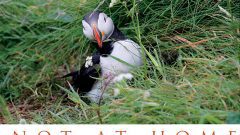Caspian Tern Photo Gallery
Breeding adult
The largest tern in the world. Note large red bill, tail with only a shallow fork, and black on the underside of outer primary feathers. Breeding adults have a fully black cap.
© Sasha Cahill / Macaulay LibraryCalifornia, July 18, 2021Breeding adult
Note massive, bright-red bill, sometimes with black tip. Breeding adults have fully black cap, sometimes raised in a short crest.
© Esme Rosen / Macaulay LibraryWestern Australia, July 28, 2014Breeding adults and juvenile with Laughing Gulls
Note big, thick-based red bill, thick neck, and squared off or slightly crested head. Juveniles are camouflaged with grayish or brownish markings on the back.
© Benjamin Clock / Macaulay LibraryLouisiana, July 01, 2010Not all videos have soundNonbreeding adult
Large tern with very large bill. Nonbreeding adults have a grayish crown and reduced black on the head.
© Terence Alexander / Macaulay LibraryQueensland, October 01, 2018Juvenile
Large tern with large reddish bill. Juveniles have brownish markings on the back and a brown-black crown that is often streaky on the forehead.
© Mason Maron / Macaulay LibraryWashington, September 15, 2020Breeding adult
Large tern with massive, red, pointed bill. The large head can look smoothly rounded, squared off, or slightly crested. The outer primaries are dark, especially on the undersides.
© Nick Bonomo / Macaulay LibraryConnecticut, April 24, 2019Nonbreeding adult
Very large tern with broad wings and large, red bill. Undersides of outer primary feathers are dark. Nonbreeding adults and immatures have variable amounts of white on the forehead. Gaps in the wings usually are a sign that the bird is molting.
© Christoph Moning / Macaulay LibraryIlles Baleares, September 30, 2010Flock
Occurs along seacoasts, barrier islands, estuaries, and saltmarshes, as well as some inland lakes and rivers.
© Christoph Moning / Macaulay LibraryWestern, January 22, 2014Compare with Similar Species
Click on an image to compare
Species in This Family
Gulls, Terns, and Skimmers(Order: Charadriiformes, Family: Laridae)
More to Read
Don't miss a thing! Join our email list
The Cornell Lab will send you updates about birds,
birding, and opportunities to help bird conservation.











































